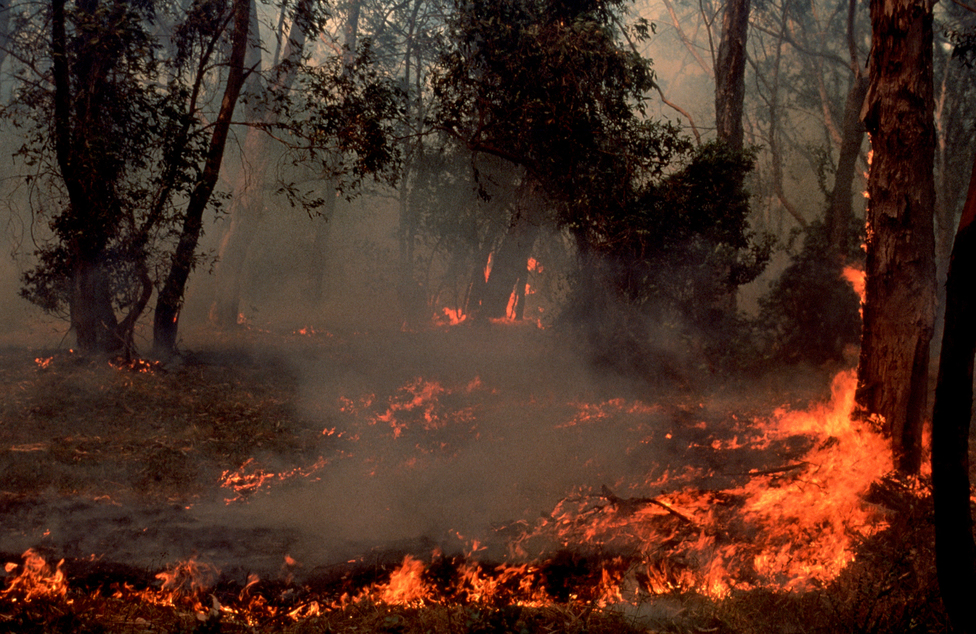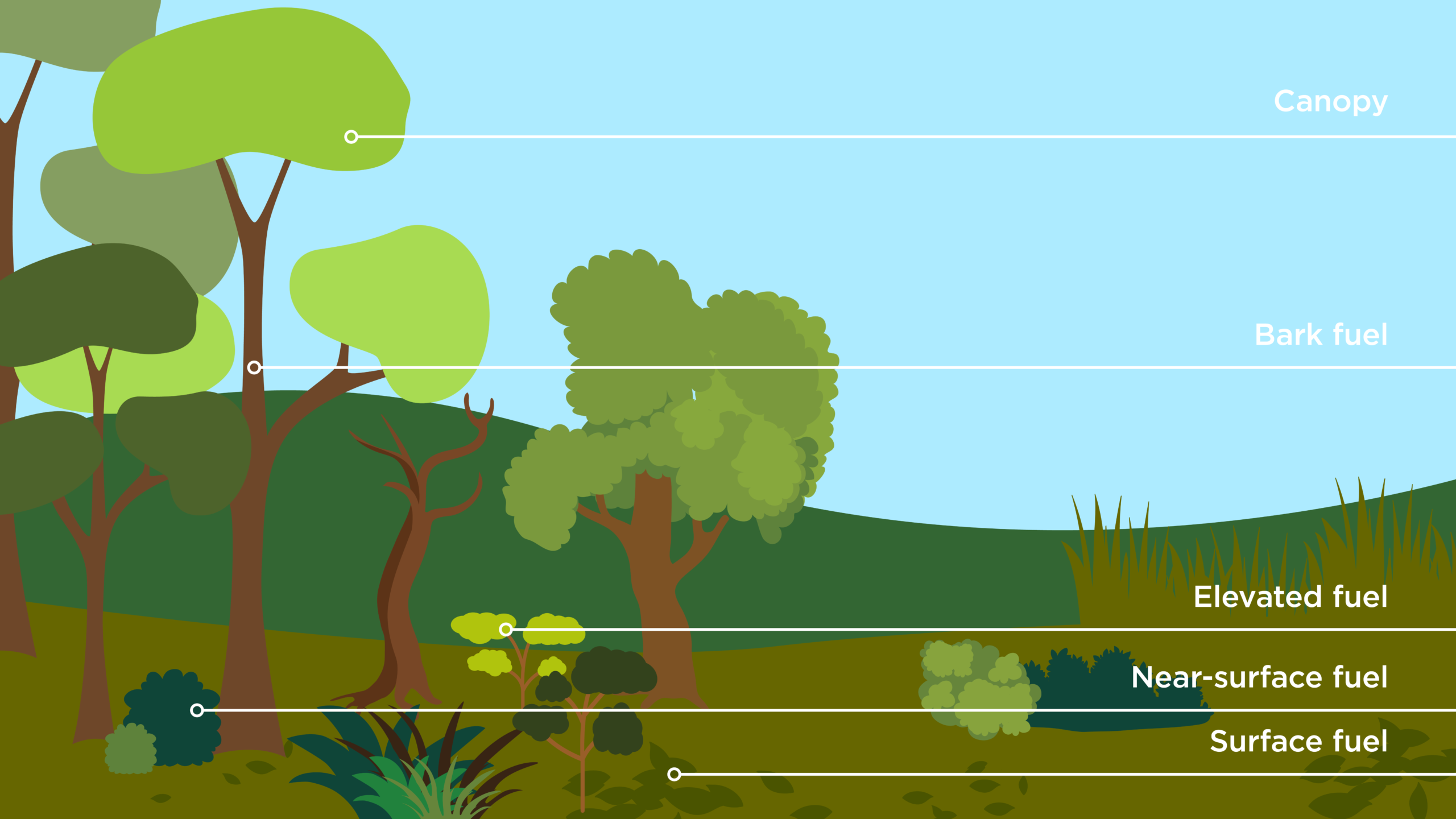
Bushfire has been part of the Australian landscape for millions of years. Much of our vegetation has evolved with fire, and like the vegetation in other harsh and dry environments, it has developed characteristics that promote the spread of fire.
Understanding how bushfires work is important when it comes to protecting life and property.
Did you know reducing trees in forested areas can actually increase the speed at which fires can travel? Or that ember attacks don’t always travel with the wind?
We spoke to our bushfire expert Dr Justin Leonard to uncover some of the biggest myths and misconceptions about bushfires. Dr Leonard has decades of experience in understanding how we can manage bushfire risk to life and infrastructure.
Myth 1: The speed of a fire is best slowed by reducing trees
Fires fronts move faster in thinned forest and open grasslands. This is because the wind speed experienced at the surface fuels is higher. However, under certain bad fire weather conditions, ember spotting ahead of an advancing fire front can dominate the rate of spread of a fire.
Reducing fine fuel (dead material thinner than a pencil and live material thinner than a match) has the biggest influence on slowing the rate of spread of a conventional flame-front driven bushfire.
Myth 2: Houses not directly near bushfires are safe
Embers can travel hundreds of meters from their source. Many houses are lost due to embers lighting fine fuel which then ignite nearby structures or combustible elements. For example, timber retaining walls near a house, with their radiant heat igniting the house.
Myth 3: Embers only arrive from the direction of the prevailing wind
Embers are wind driven. However, the wind direction experienced at ground-level out in the open at a certain time is not a good prediction method. Wind strength and direction can change at any moment. Additionally, higher altitude winds can also affect where embers travel. Many accounts describe multiple wind directions changes during a fire event, including towards the prevailing wind.
Myth 4: Crown (canopy) fires start when trees self-combust from internally-stored heat
Crown fires rely on fine fuel to burn. Embers ignite fine fuel on the ground that spreads via a ladder of other fine fuel to ignite the canopy of a tree. The fire can then spread as a running crown fire when there is a high amount of surface and elevated fuels present.
Crown fires in eucalypt forests are nearly always associated with uphill runs of fire.
Once a crown fire is burning it cannot continue if the fire passes over an area where there is insufficient surface fuels to project flame into the crown.

Myth 5: Bushfires and ladders. The only connection is using a ladder to clean gutters
The configuration of various plants comprising fine fuel provides a ladder. A ladder is path for a fire near the ground to ignite the canopy of a tree. If there is plenty of fuel, the fire can spread to the canopy creating a crown fire. Cypress hedges for example are a continuous ladder of fuels from the ground to the top of the tree.
Myth 6: Leaves are the major source of embers
The bark on tree trunks is the main source of embers. Other fine fuel such as leaves, and seed pods also produce embers.
Remember, you can never be 100 per cent safe from bushfire. To learn more about bushfire prevention and response in your area, contact your local fire authority. If you are in an emergency situation, please call 000.
CSIRO is an Australian authority on fire management, behaviour and prediction. We provide training to all state fire agencies to better understand and manage bushfires.


24th December 2019 at 12:32 am
No mention of the need to do low temperature hazard reduction burns. What about the experts tell us what percentage of the Woolamai National Park was burned in the last 7 years.
20th December 2019 at 3:35 pm
Only if you don’t mind burning a few structures when it gets out of hand.
20th December 2019 at 1:02 pm
A pity that there was no reference to the effect of climate change. I am a retired mechanical engineer and have studied the effect of changes in our climate. I can see little correlation between any changes in Australian CO2 emissions, and the effect on bush fires.
Many are drawing a direct correlation. Since Co2 emissions are a global phenomena, Australia’s minute addition must have a virtually zero effect. I believe the majorproblem is excessive dried out fuel on the forest floor.
I would appreciate a comment from Dr Leonard on this observation.
Rex Swensen
7th January 2021 at 6:34 pm
With all due respect, you’re neglecting the fact the Australia exports emissions hundreds of times in excess of those we directly generate through the carbon producing fuels we sell abroad, and we still have one of highest emission rates per head of population in the world, even ignoring the huge amount of carbon producing fuel we export.
17th December 2019 at 8:12 pm
Should we be following the example of the aboriginals are have winter burn offs to control build up of combustable fuels?
17th December 2019 at 2:47 pm
This is very helpful especially when you live on acreage as I do, thank you!